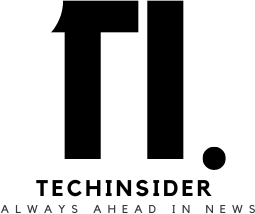![[News] US and Japan on the Verge of Deal to Restrict Chip Technology Exports to China | TrendForce Insights [News] US and Japan on the Verge of Deal to Restrict Chip Technology Exports to China | TrendForce Insights](https://img.trendforce.com/blog/wp-content/uploads/2024/08/30102252/ASML-624x416.jpg)
According to a recent Financial Times report, the US and Japan are nearing an agreement to restrict tech exports to China’s chip industry, despite Tokyo’s concerns over potential retaliation from Beijing. The White House aims to introduce new export controls ahead of the November presidential election, including rules requiring non-US companies to obtain licenses before selling products that could bolster China’s tech sector.
Citing the Financial Times, US officials have been engaged in extensive discussions with Japan and the Netherlands to align export control policies, aiming to prevent Japanese and Dutch companies from being affected by the US “foreign direct product rule.” While sources in Washington and Tokyo indicate that a breakthrough is near, a Japanese official expressed caution, noting that the situation remains delicate due to concerns over potential Chinese retaliation.
To mitigate the impact of any retaliatory measures, Japan and the US are discussing strategies, as Washington and its allies attempt to curb China’s technological advancements. The Biden administration’s export controls are designed to close loopholes and address China’s rapid progress, particularly from companies like Huawei, in chip manufacturing over the past two years.
The new restrictions are intended to make it more difficult for China to access critical chipmaking equipment, which would heavily affect companies like ASML in the Netherlands and Tokyo Electron in Japan. Washington is also pushing for restrictions on servicing these tools, including software updates and maintenance, which would further harm China’s chip ambitions. These measures would mirror those already imposed on US firms and citizens.
Should the new restrictions come into effect, Japanese equipment manufacturers could face significant repercussions. Tokyo Electron, for instance, derived nearly 50% of its revenue in Q1 of its 2025 fiscal year from China, up from 39.3% in the same period a year earlier.
Other major equipment suppliers have also seen a surge in revenue from China. In Q2 2024, ASML reported that China was its largest market, accounting for 49% of lithography unit sales, surpassing South Korea (28%) and Taiwan (11%). Applied Materials recorded 43% of its sales from China in Q2, up 22 percentage points year-over-year. Meanwhile, China contributed 39% of Lam Research’s Q2 revenue in 2024, compared to 26% a year earlier, and 44% of KLA’s revenue in the same quarter.
Read more
(Photo credit: ASML)
Please note that this article cites information from Financial Times.
Previous Article
[News] ByteDance Reportedly Turns to TSMC on in-house AI Chips to Cut Purchase Cost on NVIDIA
Next Article
[News] U.S. Retail Sales Beat Expectations in August, but Markets Still Bet on Aggressive Fed Rate Cuts


![[News] US and Japan on the Verge of Deal to Restrict Chip Technology Exports to China | TrendForce Insights 2 AIServer 728 90](https://img.trendforce.com/blog/wp-content/uploads/2023/10/31134418/AIServer-728_90.png)

